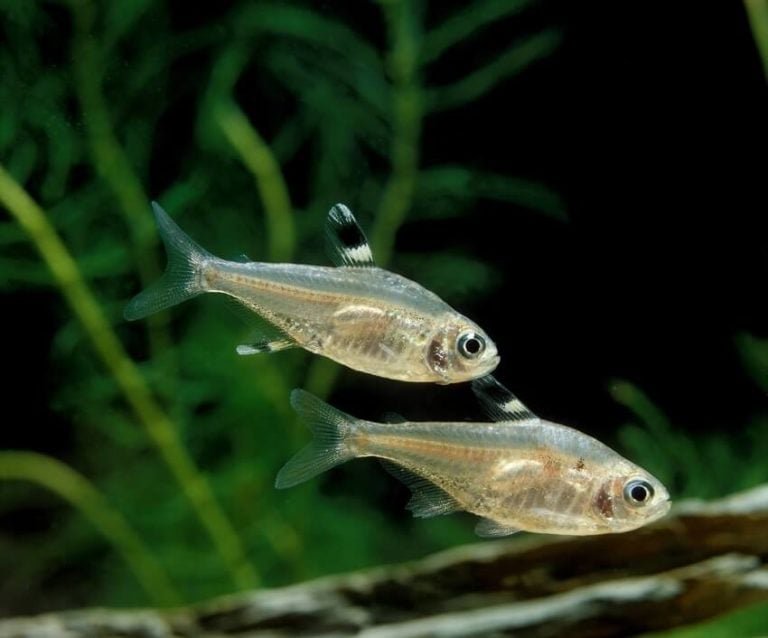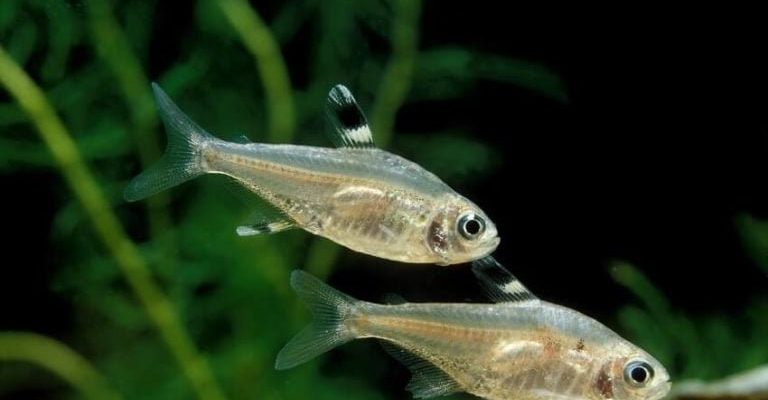
Imagine sitting down with a friend, chatting over a warm cup of coffee, and they ask you about X-Ray Tetras. “So, what do they eat?” you might wonder. The answer is a blend of their natural instincts and the right foods that nurture their well-being. Let’s take a closer look at their diet and feeding habits so you can make sure your X-Ray Tetras thrive in their watery home.
What Are X-Ray Tetras?
Before we jump into their diet, let’s quickly cover what makes X-Ray Tetras special. These tropical fish, scientifically known as *Pristella maxillaris*, are known for their transparent bodies that showcase their bone structure. They usually grow to about 1.5 inches in length, making them perfect for smaller tanks. Their peaceful nature makes them great companions for other small fish, and they love to swim in schools.
Now, when it comes to feeding, X-Ray Tetras are considered omnivores. That means they enjoy a varied diet that includes both plant-based and animal-based foods. This is crucial for their growth, health, and vibrant colors.
Natural Diet in the Wild
In their native habitats—slow-moving rivers and streams in South America—X-Ray Tetras feast on a range of foods. In the wild, their diet consists mainly of small insects, crustaceans, and plant matter. This variety helps them stay healthy and active, and it’s a blueprint for what you should aim to replicate in your home aquarium.
You might be wondering how you can mimic this natural diet. Here’s the thing: by offering a mix of high-quality flakes, live food, and frozen options, you can help your X-Ray Tetras flourish. They thrive on diversity, which keeps their diet interesting and nutritious. It’s a bit like preparing a gourmet meal rather than having the same bland dish every day.
Best Foods for X-Ray Tetras
So, what should you actually feed your X-Ray Tetras? Here’s a simple breakdown of their favorite foods:
- High-quality flake food: This should be the staple of their diet. Look for flakes that include fish meal and vegetable matter. They love it, and it packs in the nutrients.
- Pellets: Small sinking pellets can be a great addition. They ensure your Tetras get the nutrients they need as they forage at different levels of the tank.
- Frozen or live foods: Consider feeding them brine shrimp, daphnia, or bloodworms. These treats can be irresistible and provide essential protein.
- Vegetables: Don’t forget to include blanched spinach, zucchini, or peas. These provide fiber and can be a fun, nutritious snack.
Feeding them a mix not only meets their dietary needs but also encourages natural behaviors, like foraging through the tank. It’s like throwing a little party every meal time!
Feeding Frequency and Amount
When it comes to feeding, it’s essential to strike the right balance. Overfeeding can lead to a messy tank and health issues, while underfeeding might leave your X-Ray Tetras feeling sluggish. A good rule of thumb is to feed them two to three times a day, but only give them what they can consume in about two to three minutes.
You might be thinking, “How do I know if I’m feeding them the right amount?” A helpful way to gauge is to start with a small pinch of food. If they gobble it up quickly, you can add a little more next time. On the flip side, if food is left over after a few minutes, you might want to scale back. Keeping their feeding schedule consistent will help them feel secure and happy in their environment.
Common Feeding Habits and Behaviors
X-Ray Tetras have some pretty interesting feeding habits that you might find entertaining to watch. For instance, they tend to be surface feeders, zipping up and grabbing food from the top of the water. However, they won’t shy away from picking up scraps from the tank bottom.
Here’s a fun fact: when they eat, they often show off their social side. They love to feed in groups, which not only helps them feel safe but also simulates their natural behavior in the wild. If you’ve got a group of them, watch how they dart around playfully; it’s like they’re putting on a little show for you!
Supplements and Treats
While a varied diet is great, sometimes your X-Ray Tetras might benefit from added supplements. You can find nutrient-rich options like spirulina or vitamin-enriched foods designed specifically for Tetras. These can boost their health and colors, making them even more vibrant.
Treats like freeze-dried foods or live worms should only be given occasionally. Think of them as the dessert at the end of a meal—something special that they don’t get every day. Just remember, moderation is key. Too many treats can lead to health problems.
Feeding Tips for a Healthy Aquarium
To keep your X-Ray Tetras healthy, consider these practical feeding tips:
- Maintain water quality: Always remember that uneaten food can pollute the tank. Try to clean up any leftovers promptly.
- Vary their diet: Don’t stick to just one type of food. Mixing it up can keep your Tetras interested and healthy.
- Monitor their health: Keep an eye on their behavior. If they seem uninterested in food, it might be a sign of stress or illness.
- Adjust for tank mates: If you have other fish in the tank, make sure the feeding strategy works for everyone.
By following these tips, you’ll create a happy, healthy environment for your X-Ray Tetras where they can thrive.
Understanding the diet and feeding habits of X-Ray Tetras is essential for ensuring they lead healthy lives in your aquarium. With the right balance of high-quality foods, feeding practices, and a bit of variety, you can keep these lovely fish vibrant and full of life. Just remember to keep things fresh and watch for their unique behaviors as they enjoy meal times together. Now that you know what makes them tick (or swim!), you’re well on your way to being a great tetra parent. Happy fishkeeping!

